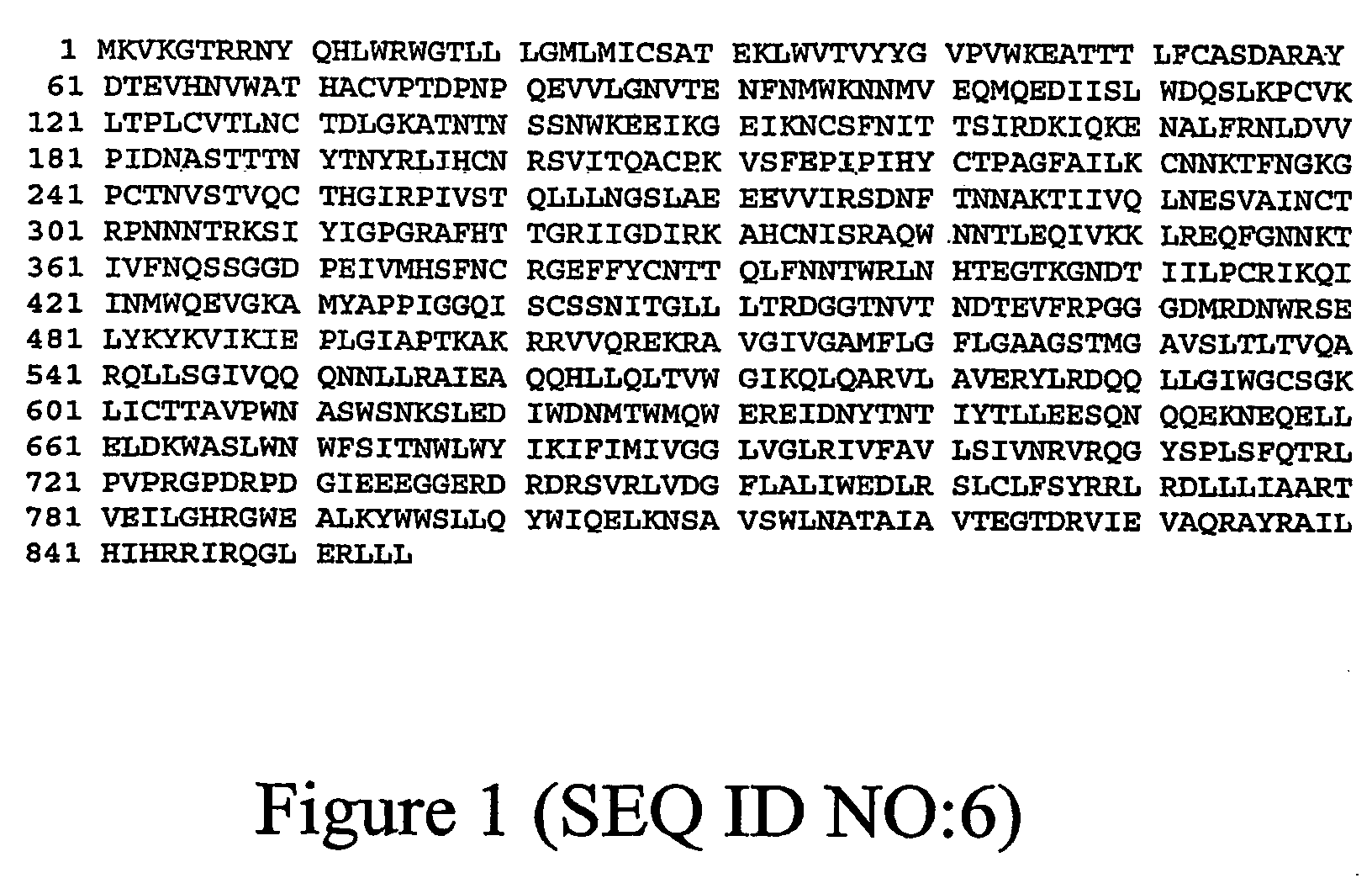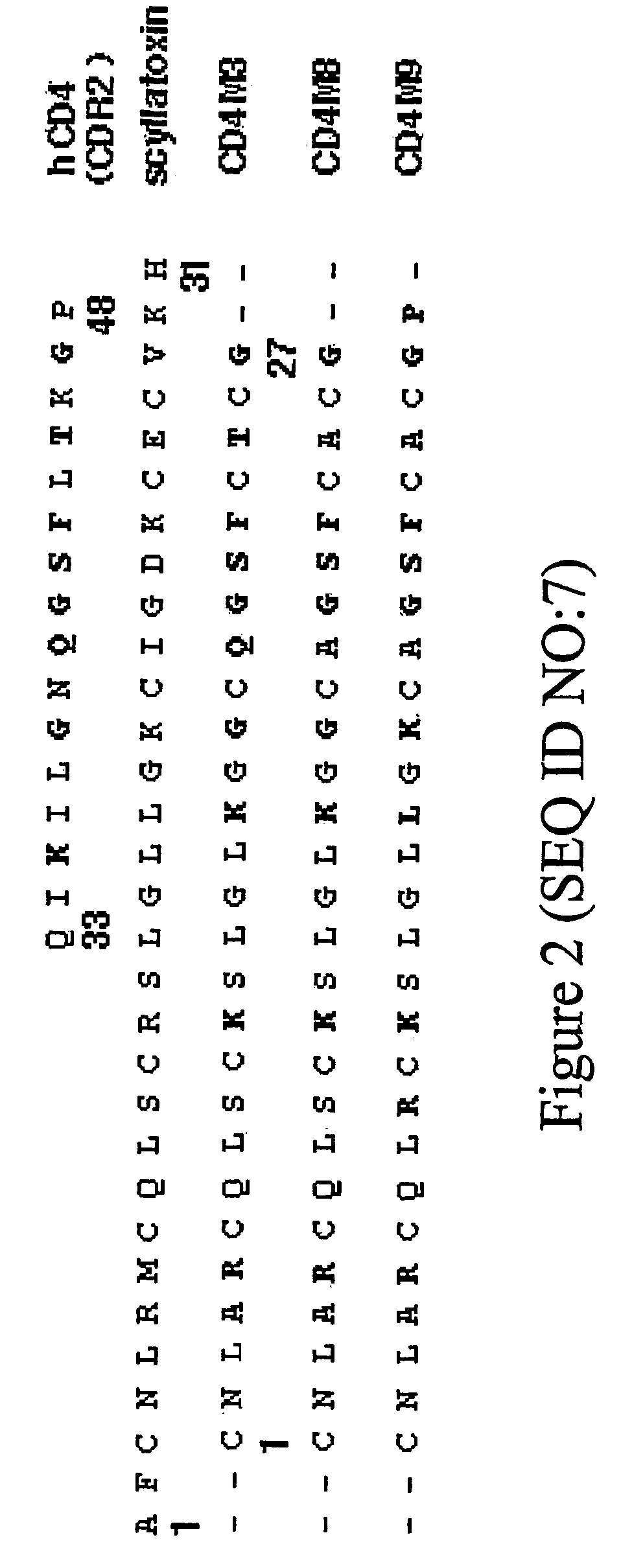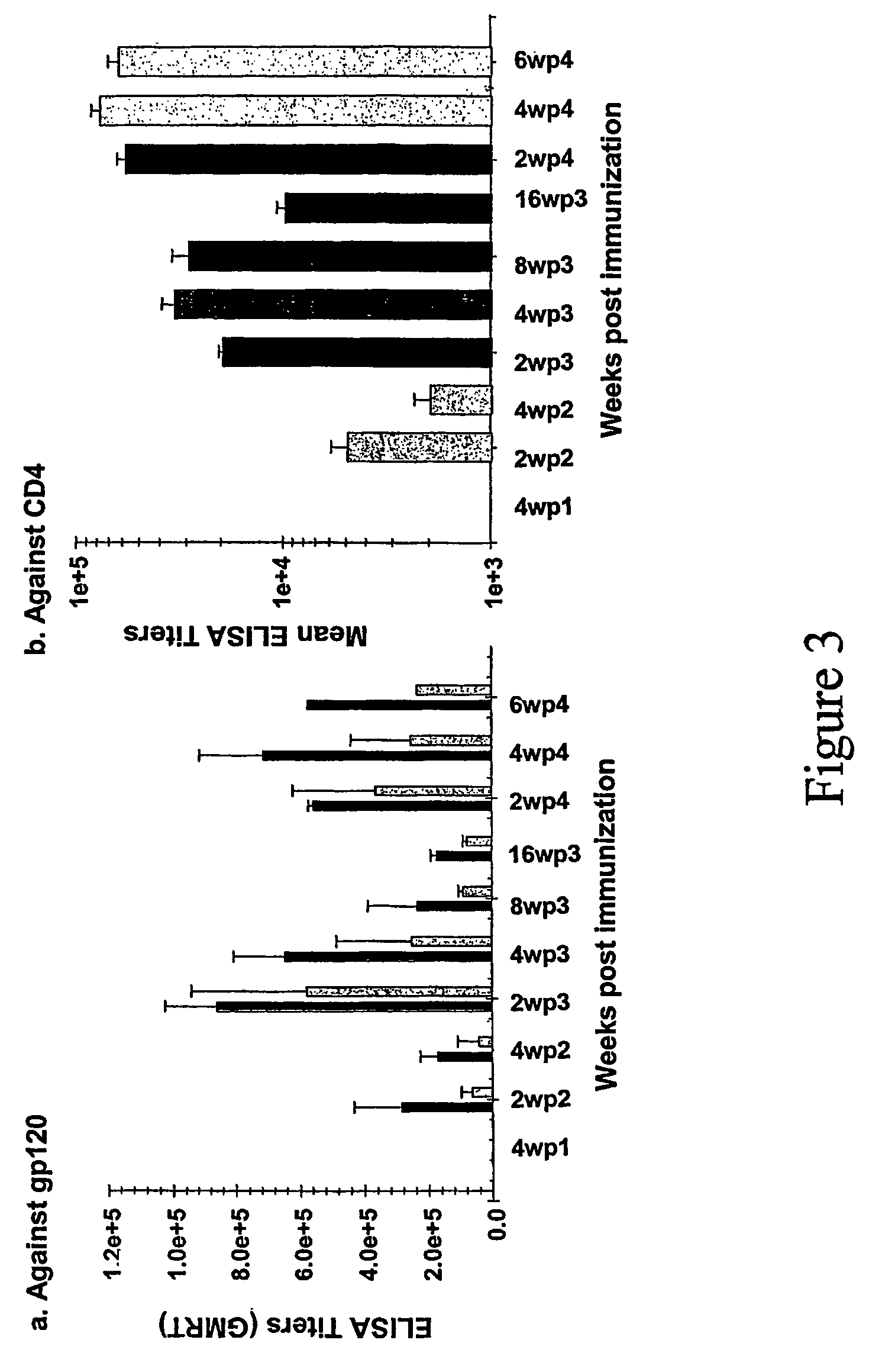Chimeric HIV Env proteins comprising CD4 mini-proteins or CD4 mimetics that are capable of inducing neutralizing antibody responses against cryptic Env epitopes
a technology of cryptic env and chimeric hiv, which is applied in the field of modified hiv envelope (env) polypeptides, can solve the problems of not being able to induce the appropriate specificity of antibodies directed against gp120, exhibiting broad antibody responses, and being found in most infected individuals
- Summary
- Abstract
- Description
- Claims
- Application Information
AI Technical Summary
Benefits of technology
Problems solved by technology
Method used
Image
Examples
example 1
Preparation of gp120-Soluble CD4 (gp120-sCD4) Complexes
[0197]Stable purified gp120-sCD4 complexes were prepared with and without formaldehyde or formalin treatment. To induce conformational changes in the gp120, equimolar concentration of gp120 (SF2) and sCD4 were incubated together at 37° C. for one hour. At the cellular level, these interactions are transient. Therefore, at the end of incubation, half of the complexes were fixed with formaldehyde or formalin while the other half remained untreated. Both the treated and untreated complexes were separated on Superdex-200 column. Purified fractions were analyzed on an HPLC column and on SDS-PAGE (FIG. 4, panels A and B). The purified complexes contained both gp120 and CD4 together. Furthermore, these complexes appeared to be homogeneous and did not contain more than 2-3% of free sCD4.
example 2
Rational Design of a CD4 Mini-Protein
[0198]The CD4 miniprotein, CDM3 was “rationally” designed as described in Vita et al. (1999) Proc Natl Acad Sci USA 96(23):13091-6, using a structure and function relationship approach. In a first step, the three-dimensional structure of CD4 miniprotein was determined by 1H-NMR spectroscopy. This analysis showed that the miniprotein contained the α / β fold characteristic of the scorpion scaffold, and importantly, that the putative active site, transferred from CD4, was very well defined. The backbone atoms of the sequence 17-26 of CD4M3 could be superimposed on the corresponding atoms of the sequence 37-46 of native CD4 with a RMS deviation of 0.61 Å only. Furthermore, the side chains of Gln20, Ser22, Phe23 and Thr25 had an orientation very similar to that of the corresponding side chains in CD4. In particular, the Phe23 side chain was very well defined because of many long-range contacts observed. This side chain protruded into the solvent in a c...
example 3
Additional Rationally Designed Mini CD4 Proteins
[0201]As described in Vita et al. (1999) Proc Natl Acad Sci USA 96(23):13091-6 and Martin et al. (2003) Nat. Biotech. 21:71-76, further rationally designed mini CD4 proteins are made by introducing an azido photo-reactive function on the distal (para) position of the Phe23 phenyl ring, which, by analogy with sCD4 Phe43, should block the entrance of the gp120 hydrophobic “Phe43 cavity.” The azido photo-reactive function can be easily produced chemically from the commercially available p-amino-phenylalanine and, upon irradiation at 250 nm, forms a reactive nitrene moiety that undergoes fast insertion reaction in electron-rich amino acid side chains (e.g., aromatic side chains), which are indeed numerous in the hydrophobic “Phe43 cavity.” Alternatively, a haloacetamide group, reactive to methionine or histidine residues, present close to the “Phe43 cavity,” is incorporated on the p-amino-phenylalanine 23 or on another position at the inte...
PUM
| Property | Measurement | Unit |
|---|---|---|
| molecular weight | aaaaa | aaaaa |
| molecular weight | aaaaa | aaaaa |
| hydrophobic | aaaaa | aaaaa |
Abstract
Description
Claims
Application Information
 Login to View More
Login to View More - R&D
- Intellectual Property
- Life Sciences
- Materials
- Tech Scout
- Unparalleled Data Quality
- Higher Quality Content
- 60% Fewer Hallucinations
Browse by: Latest US Patents, China's latest patents, Technical Efficacy Thesaurus, Application Domain, Technology Topic, Popular Technical Reports.
© 2025 PatSnap. All rights reserved.Legal|Privacy policy|Modern Slavery Act Transparency Statement|Sitemap|About US| Contact US: help@patsnap.com



